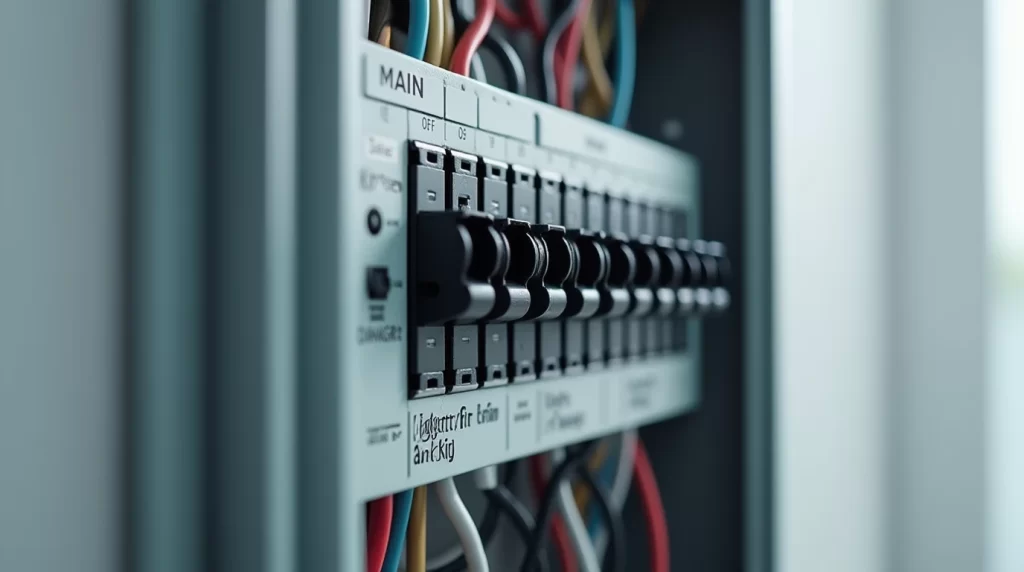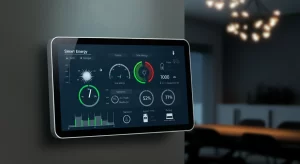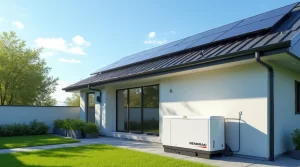Your home’s electrical panel is the heart of your entire electrical system. From powering kitchen appliances and air conditioning to keeping lights on during family gatherings, this unassuming box plays a pivotal role in safety and comfort. Yet, for many homeowners, understanding your home’s electrical panel can seem daunting.
In this guide, we’ll walk you through how an electrical panel works, the signs it might be time for an upgrade, and steps you can take to keep your home both safe and efficient.
1. What Exactly Is an Electrical Panel?
Sometimes called a breaker box or load center, your electrical panel is where electricity from the utility company is distributed throughout your home. Each circuit breaker in the panel corresponds to a specific zone or appliance, protecting against overloads by tripping (shutting off) if excessive current flows through that circuit.
Key Components:
- Main Breaker: This large switch controls all power to the house.
- Branch Circuit Breakers: Individual switches for lighting, outlets, and dedicated appliances.
- Bus Bars: Metal bars that distribute power to each breaker.
Did you know? If your breaker box is outdated or frequently tripping, you might benefit from reading our post on Maximizing Home Comfort: Essential Electrical Upgrades for a Cozy Winter. Even if it’s not winter, the same principles apply to ensuring safe, consistent power year-round.
2. Common Panel Issues to Watch Out For
- Frequent Breaker Trips
- Sign of overloaded circuits or outdated wiring.
- Could indicate the need for a larger-capacity panel or dedicated circuits.
- Rust or Corrosion
- Moisture infiltration can compromise breaker function.
- Check for water stains or rust near the panel.
- Flickering Lights or Burning Odors
- Flickers may point to loose connections or undervoltage.
- Any burning smell is a red flag; contact an electrician immediately.
- Old Fuse Boxes
- While fuse boxes aren’t inherently unsafe, they lack modern circuit-breaker protection.
- Upgrading to breakers can simplify maintenance and improve safety.
Related Reading: For broader code compliance considerations, check out our guide on Electrical Code Updates and Safety Standards: What Homeowners Need to Know. This ensures your panel meets current regulations and minimizes risks.
3. When Should You Consider an Upgrade?
- Home Expansion or Remodel: Adding extra rooms, a basement suite, or a new workshop? Additional circuits might exceed your panel’s capacity.
- Adding High-Powered Appliances: Electric vehicles (EVs), tankless water heaters, and modern HVAC systems demand more amperage.
- Frequent Overloading: If breakers consistently trip when you run multiple devices, your panel may need more circuits or higher capacity.
Fun Fact: Planning to power your home in an emergency? Learn about generator compatibility in our article, What Size Generator Is Needed to Power a House? to ensure your upgraded panel can handle backup power seamlessly.
4. Understanding Load Capacity
Every electrical panel has an amp rating, commonly 100 amps, 150 amps, or 200 amps. For modern homes—especially those with energy-intensive amenities—a 200-amp service is often recommended.
Why it matters:
- Avoid Overloads: A properly rated service helps prevent breaker trips or overheated wiring.
- Future-Proofing: Extra capacity allows you to install smart devices, new appliances, or even an EV charger without redoing the entire panel.
- Insurance and Resale: A home with updated electrics can command better insurance rates and a higher sale price.
5. DIY or Call a Pro?
Basic Maintenance:
- You can safely reset a tripped breaker or label your circuits to stay organized.
- Keep the area around your panel clutter-free for quick access in emergencies.
Professional Tasks:
- Upgrading amp capacity, replacing bus bars, or adding dedicated circuits typically require a licensed electrician.
- Why? Electrical code compliance, advanced load calculations, and safety. Mistakes can lead to fires or electrocution hazards.
Expert Tip: Even if you’re handy, messing with the main service lines is risky. If you’re not a trained professional, schedule an inspection to identify your best upgrade options.
6. Essential Maintenance Tips
- Annual Visual Inspections
- Look for loose screws, rust, or any signs of water intrusion.
- Gently remove dust with a soft brush or vacuum around the box (with the main power off for safety).
- Test Breakers Periodically
- Flipping breakers off and on helps prevent them from becoming “stuck” over time.
- Keep track of any that feel wobbly or don’t click firmly into place.
- Stay Code-Compliant
- Check your local building codes or consult a pro to ensure your panel meets current regulations.
- DIY: How to Test and Replace Batteries in Your Smoke Detectors can’t directly fix your panel, but it’s a handy reminder that code compliance often involves multiple safety features in the home.
7. Contacting the Pros
An outdated or overworked electrical panel isn’t just inconvenient—it’s a safety hazard. Investing in a professional inspection or a panel upgrade not only enhances your home’s energy efficiency but also reduces fire risks and ensures code compliance.
At Kendrick Electric, we specialize in:
- Panel Upgrades and Replacements
- Circuit Additions for Renovations
- Code Compliance Checks and Permits
- Routine Maintenance and Inspections
Need advice tailored to your home’s needs? Dial (435) 752-1888 or Contact Us to schedule an appointment. Our licensed electricians are ready to help you understand and optimize your home’s electrical panel.
Conclusion
Understanding your home’s electrical panel is key to maintaining a safe, efficient property. From preventing overloads to planning expansions, knowledge of breakers, amperage, and code requirements empowers you to make informed decisions. With routine checks and professional guidance when necessary, you’ll keep your home running smoothly—no matter how many new gadgets or appliances you add.
Ready for peace of mind? Reach out to Kendrick Electric today for expert advice and comprehensive panel services.



